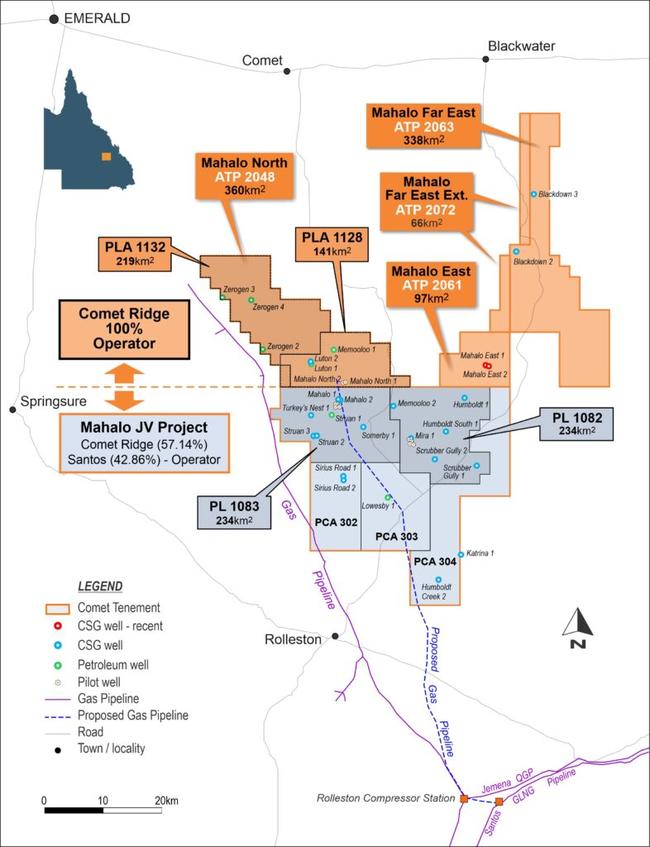Mahalo JV gas project pushing ahead with FEED
Comet Ridge’s operating partner Santos has started front-end engineering and design work for the Mahalo JV project that could boost east coast gas supply.

Mahalo JV Operator has approved commencement of FEED
FEED is a pre-cursor for a final investment decision for the project, which could boost east coast gas supply
Coal samples from Mahalo East-1 vertical well still desorbing strong gas volumes with production testing to commence soon
Special Report: Comet Ridge and its operating partner Santos have reached a key milestone in the development of their Mahalo JV gas project in the southern Bowen Basin, Queensland, with approval to commence front-end engineering and design work.
Front-End Engineering Design (FEED) studies are carried out after feasibility studies to estimate the technical specifications, subsequent cost and procurement needed for a project, providing a strong indicator of project requirements and costs.
FEED studies are also a pre-cursor for a final investment decision and Comet Ridge (ASX:COI) said it will work together with Santos (ASX:STO) to finalise the work program and timetable over the coming weeks.
The 989km2 Mahalo JV project (STO 42.86% and COI 57.14%) currently has high certainty proved and probable (2P) reserves of 266 petajoules of gross gas volumes certified by Comet Ridge.
Its development will bring much needed gas resources to the east coast market, which is staring down the throat of a potential shortage due to declining production in the southern states.

Mahalo gas hub showing the various projects. Pic: Comet Ridge
Mahalo East pilot progress
To the northeast at its wholly owned Mahalo East project, COI noted that analysis of recovered core from the Mahalo East-1 vertical well is ongoing and continues to show strong gas volumes desorbing from the coal samples.
This indicates that the targeted coal seams are gas-prone, exactly the right kind of coals sought for coal seam gas drilling.
The company recently completed drilling of both Mahalo East-1 vertical well and Mahalo East 2 lateral well, which successfully entered the Aries coal before intersecting the vertical well and continuing on a north-westerly heading inside the coal seam until it reached a heavily fractured zone.
Production tubing and a downhole progressive cavity pump for lifting water out of the vertical well have been installed, while the production separator, flare and metering skid have been moved from the Mahalo North pilot area and are installed at the Mahalo East-1 well pad.
The company is also installing a temporary lined ring tank to collect and manage produced water when production testing starts next month.
Mahalo East has best estimate (2C) contingent resources of 31 petajoules (PJ) of gas and is about 25km east of the company’s Mahalo North pilot, which has proved and probable (2P) reserves of 43PJ.
Separately, the company noted that progress for EPBC approval for its wholly owned Mahalo North project is continuing through the federal government.
Its recent activities have focused on field analysis and sampling to provide information in response to a detailed preliminary data request with a final report expected to be submitted early next week now that laboratory analysis of these samples has been finalised.
This article was developed in collaboration with Comet Ridge, a Stockhead advertiser at the time of publishing.
This article does not constitute financial product advice. You should consider obtaining independent advice before making any financial decisions.


